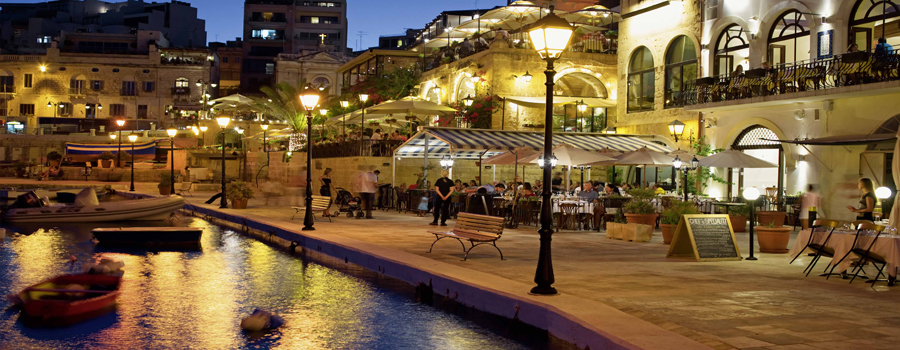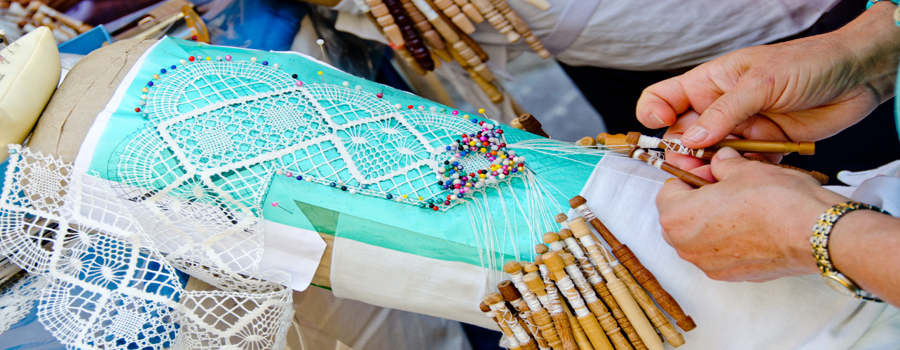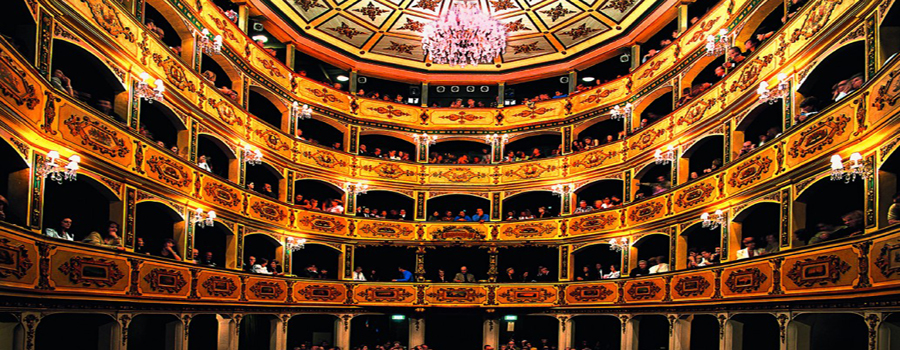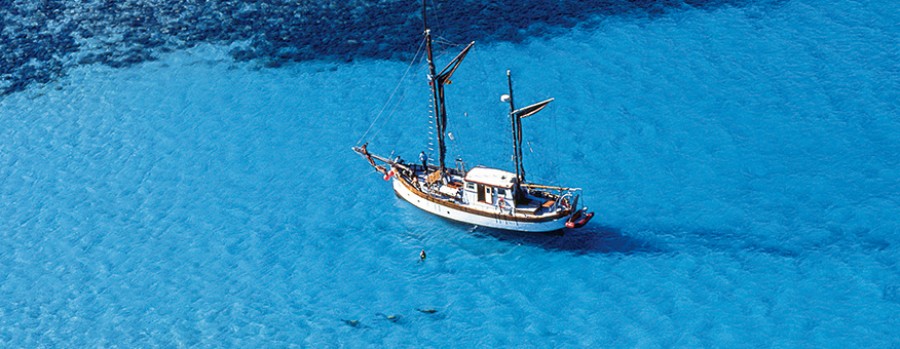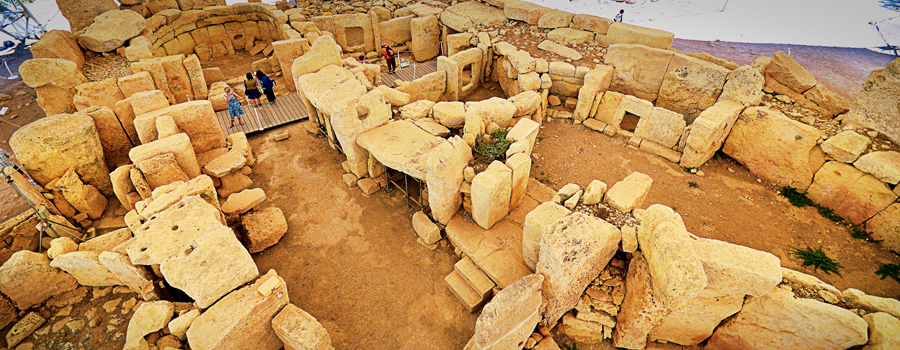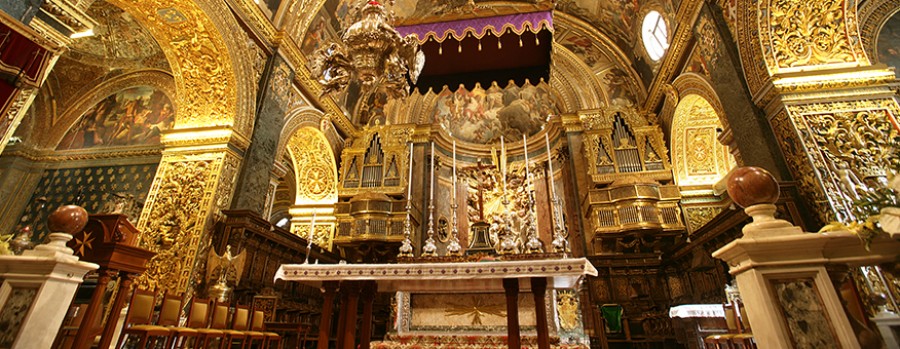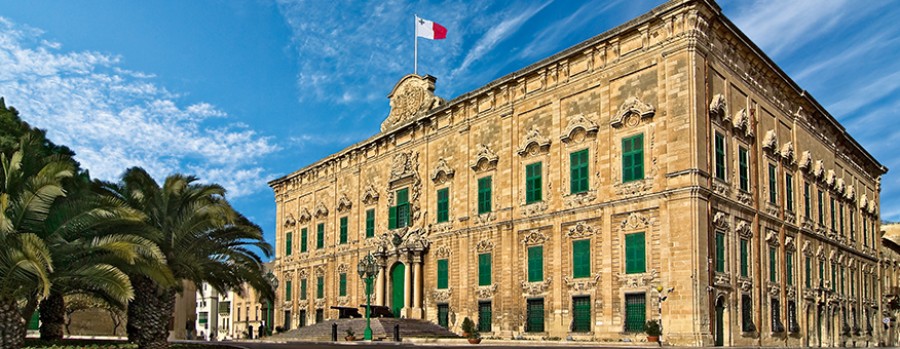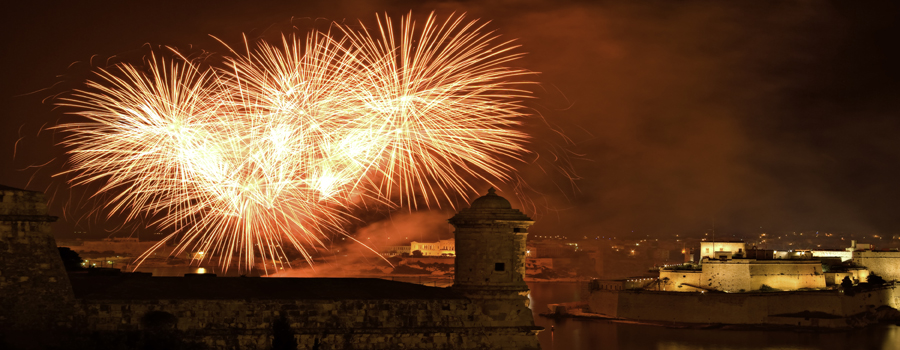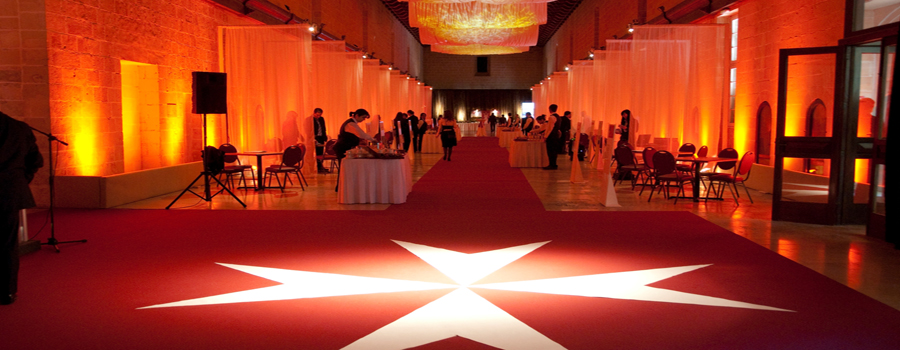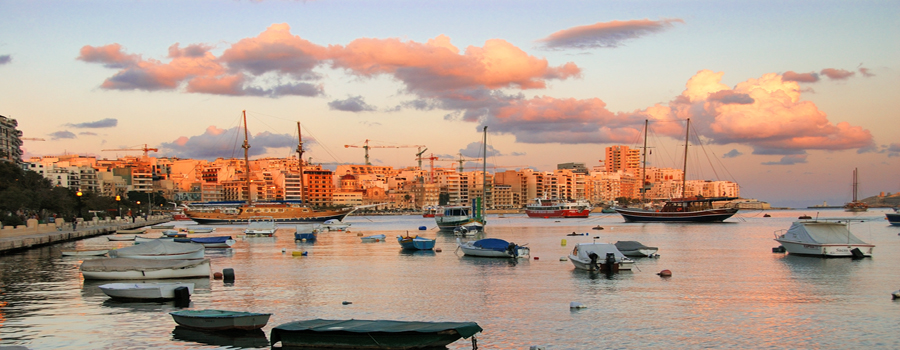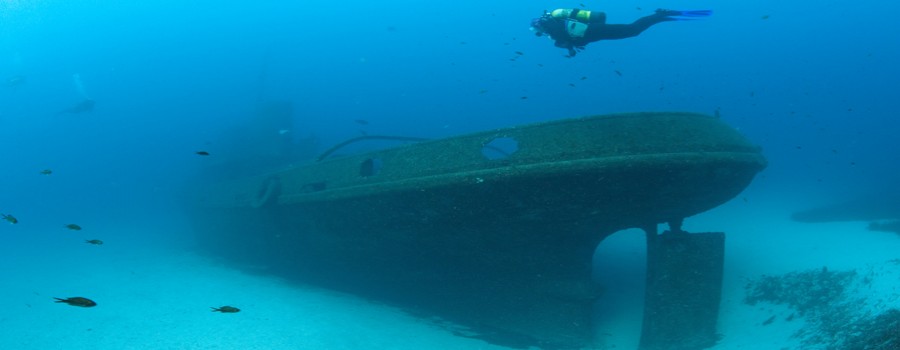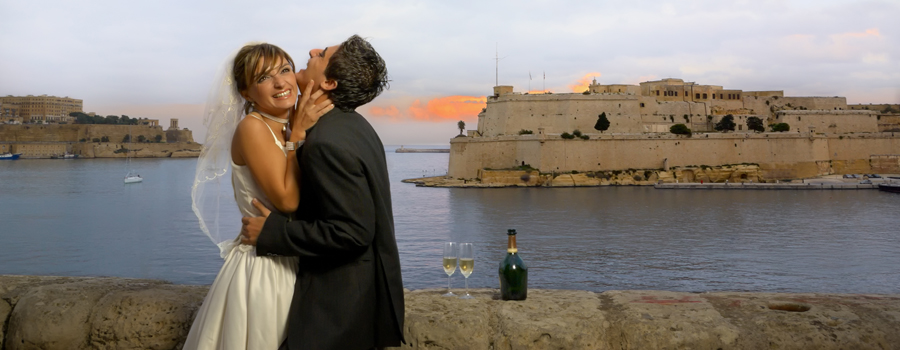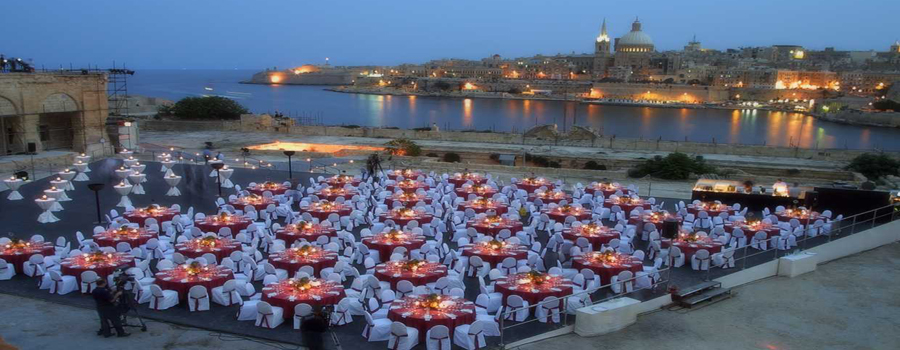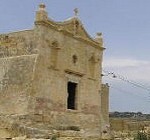 In the footsteps of St. Paul
In the footsteps of St. Paul
Christianity has over 2,000 years of history in Malta. According to tradition it was brought to the islands by none other than the Apostle Paul himself in circa A.D. 60. Paul was being taken to Rome to be tried as a political rebel, but the ship carrying him and some 274 others was caught in a violent storm and was wrecked on the Maltese coast. All aboard swam safely to land. The site of the wreck is traditionally known as St. Paul’s island and is marked by a statue commemorating the event. The welcome given to the survivors is described in the Acts of the Apostles (XXVII) by St. Luke: “… and later we learned that the island was called Malta. And the barbarous people who lived there showed us great kindness, and they made a fire and called us all to warm ourselves”. The reference to “barbarous” indicates that the people spoke neither Latin nor Greek. Ancient Maltese derived from Phoenician.
As the fire was lit, Paul was bitten by a poisonous snake but he suffered no ill effects. The islanders took this as a sign that he was a special man. This scene is depicted in many religious works of art on the islands. According to tradition the Apostle took refuge in a cave, now known as St. Paul’s Grotto in Rabat, Malta.
During his winter stay Paul was invited to the house of Publius, the Romans’ chief man on the islands. It was here that Paul cured Publius’ father of a serious fever. Publius is then said to have converted to Christianity and was made the first Bishop of Malta. The Cathedral of Mdina is said to stand on the site of Publius’ house. Whatever the legend, archaeological evidence shows Malta was one of the first Roman colonies to convert to Christianity.
The following is a suggested programme for a guided excursion following in the footsteps of St. Paul and others.
Valletta
![]() Start your journey at the Upper Barracca Gardens, on the upper tier of St. Peter & Paul Bastion, taking in the breathtaking views of the Grand Harbour.
Start your journey at the Upper Barracca Gardens, on the upper tier of St. Peter & Paul Bastion, taking in the breathtaking views of the Grand Harbour.
Proceed to Dar l-Emigrant to watch the audiovisual spectacular “The Sacred Island” show.
Visit St. John’s Co-Cathedral, Malta’s most artistic historical monument built by the Knights of the Order of St. John as their Conventual church between 1573 and 1578. Visit the Oratory which was constructed in 1602 and which houses the famous Caravaggio paintings “The Beheading of St. John” and “St. Jerome”.
Proceed to the Grand Master’s Palace which was built in 1574. It contains portraits of Grand Masters, European monarchs and Presidents of Malta and other works of art. In the Tapestry Chamber hangs a unique collection of Gobelin Tapestries. Many of the State Apartments are decorated with friezes depicting episodes from the history of the Order.
Visit the Church of St. Paul’s Shipwreck. This church is situated in St Paul’s Street in Valletta. The church displays the relic of the right wrist-bone of St. Paul, and part of the column from San Paolo alle Tre Fontane, on which the saint was beheaded in Rome. The first church was built in 1609. Grandmaster Lascaris had paid for the building of the church. The facade in Baroque style was finished in 1885. It has two belfries and seven bells. The decorations were done by the Maltese sculptor Antonio Busuttil. Under the belfries are two statues of Saints Peter and Paul both by Vincenzo de Candia. In the middle is a statue of Our Lady. The frescoes of the vault and also the pictures in the apses and choir are all the work of the Roman painter Attilio Palombi. The pictures in the vault show episodes in the life of St. Paul. The organ dates back to the 17th century and is one of the oldest organs in Malta.
The church has eight chapels and contains forty grave-stones made of marble and mosaic. This church is rich in silver, with silver altar facades, candlesticks and lamps which were given to the church over the years. The treasures in this church cannot be compared with any other church in Malta. In the sacristy is a portrait of Grandmaster Manoel de Vilhena by Antoine de Favray, amongst other portraits of Grandmasters and Popes connected with the history of the church.
Mdina Cathedral
![]() Even though we have St John’s Co-Cathedral in Valletta, the Mdina Cathedral is the Cathedral of Malta since a diocese can only have one cathedral. St John’s is called a “Co-Cathedral” because when the Knights of the Order of St John built their convent church they wanted to raise it to the status of a Cathedral. As two of the Grandmasters later became popes they were granted this privilege and called their convent church a Co-Cathedral.
Even though we have St John’s Co-Cathedral in Valletta, the Mdina Cathedral is the Cathedral of Malta since a diocese can only have one cathedral. St John’s is called a “Co-Cathedral” because when the Knights of the Order of St John built their convent church they wanted to raise it to the status of a Cathedral. As two of the Grandmasters later became popes they were granted this privilege and called their convent church a Co-Cathedral.
In 1693 Mdina was hit by a severe earthquake and the cathedral which before was in an Apullian-Romanesque style was practically totally destroyed. When it was re-built between 1697 and 1702 it was built in Baroque style. Before the earthquake there was no square in front of the Cathedral but only a narrow street, like many of the streets one sees today in Mdina. The square was opened in front of the cathedral to give the cathedral a more impressive facade and show off its Baroque dramatic style.
The cathedral has two elegant belfries and six bells. On the top of the main door are three coats of arms. One belongs to Grandmaster Perellos who paid for the building of the Cathedral, another is the coat of arms of Mdina and the last is the coat of arms of the Bishop Torres who opened the Cathedral. The only part of the cathedral which survived the earthquake is the part behind the altar in the apses. There one can admire a beautiful painting by Mattia Preti depicting the shipwreck of St. Paul.
The choir stalls behind the altar are very intricately carved and date back to the 16th century. The Baptismal Font at the back also dates from the 16th century is also, with marble underneath and beautifully-carved wood on top. The grave-stones and beautiful monuments in the church are also work of art in themselves, showing the bishops and noble families that are buried in the Cathedral.
The vault of the Cathedral was painted by two Italian brothers, Francesco and Antonio Manno. The pictures depict episodes from the life of St. Paul to whom the Cathedral is dedicated. The dome is probably one of the most elegant on the island and was painted by Gallucci, another Italian artist. The vault and dome were recently restored by Samuel Bugeja from Malta.
The Cathedral like most churches in Malta is in the shape of a Latin cross. On the left aisle, just before coming to the chapel of the Blessed Sacrament, one can still admire the original door of the Cathedral which also survived the earthquake. It is a very fine specimen of a door made of wood brought from the Irish bogs. It is intricately carved and almost looks like bronze. As one moves on to the Chapel of the Blessed Sacrament one can admire the tabernacle made of solid silver and the work of the well-known Italian artist Benvenuto Cellini. The icon of the Madonna above the tabernacle is attributed to St. Luke. St Luke had suffered shipwreck along with St. Paul in 60 A.D. according to the Acts of the Apostles in the Bible. St. Luke was both a doctor and an artist.
The flooring of the chapel of the Blessed Sacrament and of the chapel of the Holy Crucifix on the right hand side have beautifully designed marble flooring, matching the ceiling and the beautiful wooden gates which are the the work of Felic Zahra a Maltese craftsman. The lamps are Venetian and the organ is French. It is 300 years old and is still played to this very day. This church boasts very good acoustics as does the square in front of the Cathedral where in summer concerts are given in the open air in front of the Cathedral.
St. Paul’s Church, Rabat
In Malta’s old capital Mdina visit also St. Paul’s Church. It was built to the left of the cave known as St. Paul’s grotto and right outside the walls of the old capital. It was therefore known as “San Paolo fuor le Mura” which means “St. Paul outside the walls”.
The earliest records of this church date back to 1372. It was dedicated to St. Paul and is where, according to tradition after being shipwrecked in Malta in 60 A.D., St. Paul prayed for three months in the grotto under the church while trying to convert the Maltese to Christianity.
St. Paul’s Grotto
The St. Paul’s Grotto just beneath the St. Paul’s Church. Tradition has it that the stones of the grotto could heal snake bites and fever, and that every stone that is broken from the grotto grows again so the grotto always remains the same size.
Under the main church of St. Paul are two small chapels. It is said that it is here were Publius, the Governor of the islands at the time, was baptised and was also consecrated bishop of Malta. Previously the area were these chapels are was used as a prison by the Romans. One can still see the loops in the ceiling which were used to hang chains and ropes for persecution.
St. Paul’s Catacombs
St. Paul’s Catacombs are a typical complex of interconnected, underground Roman cemeteries that were in use up to the 4th century A.D. They are located on the outskirts of the old Roman capital Melite, today’s Mdina, since Roman law prohibited burials within the city.
St. Paul’s Catacombs represent the earliest and largest archaeological evidence of Christianity in Malta. The site was cleared and researched in 1894 by Dr A. A. Caruana, the pioneer of Christian archaeology in Malta.
St. Paul Milqi Church
This church which was built in the 17th century has recently been restored and is now open as a museum. In 1964 an Italian Archaeological Mission excavating around and inside the chapel at San Pawl Milqi uncovered an extensive complex comprising a country villa dating from Roman times and oil and wine presses. Considering the extensiveness of the farm-cum-villa it is possible that this is where the Apostle St. Paul and his fellow survivors of the shipwreck in the year 60 A.D. spent their first three days on the island.
St. Paul’s islands
St. Paul’s islands are thought to be the location for the shipwreck of the Apostle St.Paul. They are two inter connected islands with a circumference of circa 2km. There is a statue of St. Paul on the larger island and a broken structure, probably an old chapel, just next to it. The islands are quite barren with salt resistant shrubs covering most of the surface. Wild rabbits, a number of lizards, insects and birds also live on the Islands. If you visit during the weekdays you could be the only visitor on the islands.
The closest point to Malta from the islands is Selmun a mere 300m away, but Selmun is not easily accessible, and it is quite dangerous to swim the channel as bigger boats drive by continuously. The safest way to get to the islands is by boat from Bugibba. You can freely land on a small jetty in between the two Islands on the inner side.
The island of Gozo
Munxar was the last locality in Gozo to become a parish. It lies on the very southern tip of Victoria.
The parish church is a small baroque temple built from the typical Maltese stone and is dedicated to St. Paul. It was built between 1914 and 1925 and was consecrated on 18 October 1925. Bishop Joseph Pace established it as a parish church on 12th December 1957.
The feast of St. Paul’s Shipwreck officially falls on the 10th of February which is also a national public holiday. However in Munxar the festivities are celebrated outdoors on the third Sunday of May.
Archaeological remains prove that the Cathedral was built on the same site of a Roman temple dedicated to Juno. The present building was constructed between 1697 and 1711.
The Cathedral is a fine Baroque structure in the form of the Latin cross and is built entirely from the local lime stone. The sanctuary was built on the plans of the Maltese architect Lorenzo Gafa.
A tall belfry with five bells at the back of the Cathedral replaces the more traditional and common two belfries at the front, while a 1739 painting on the interior of the temple gives the impression of a dome when in reality the roof of the building is flat. This painting is a masterpiece in the art of perspective and sometimes it is not easy to convince first time visitors that the roof of the Cathedral is actually flat.
Another attraction of the Cathedral is the statues of Santa Marija, The Assumption of Our Lady, which was undertaken in Rome in 1897. The feast of the Assumption of Our Lady to Heaven is celebrated each year on the 15th of August, a feast day which is also a national holiday.
Our Lady of Ta’ Pinu Church
The origins of the Shrine of Our Lady of Ta’ Pinu are lost in mists of time. The first record of its existence is in the archives of the Curia of Gozo and Malta is when His Lordship Bishop Domenico Cubelles paid a visit to the chapel. This noted that the chapel had just been built.
The property had belonged to the noble family of the “Gentile”. When in 1575 the Apostolic Visitor Monsignor Pietro Duzina, delegated by Pope Gregory XIII to visit the Maltese islands, made his pastoral visit to the church he found it to be in a very bad state. He ordered the church to be closed and demolished and its incumbent duties to be passed to the parish church, today the Cathedral of Gozo. But according to tradition when the workmen struck the first blow with the pick he broke his arm. This was taken as an omen that this chapel had to be preserved for the future generations. In fact this was the only chapel to survive Monsignor Duzina’s decree ordering the demolition of the other similar chapels on the island. In 1585 the church property changed hands and consequently its name from “of the Gentile” to “Ta’ Pinu” meaning “of Philip” since Pinu (Philip) Gauci was the procurator of this church.
However the report made by Monsignor Cagliares during the pastoral visit in 1615 was not very favourable. In fact he wrote “The doors are without locks and there are no candlesticks nor a holy image. The Church is badly in need of repairs for its fallen into neglect.” It must be noted that in those days an undefended Gozo suffered frequent attacks by the corsairs who used to carry with them anything useful to them. Pinu Gauci willingly offered the money for its restoration and it was rebuilt in 6 years. A stone altar was erected and the necessary vestments for liturgical services were provided. He also commissioned the painting of the Assumption of Our Lady into heaven for the altar. This altarpiece which remains to this day was completed in 1619 by Amadeo Perugino, probably a member of the Inquisitor’s train.
The chapel, typical of so many in the Maltese islands, might have remained unknown except for the unusual events of 1883. On the 22nd June 1883 Karmela Grima, a 40 year old spinster and a great devotee of the Blessed Virgin, heard a voice while passing by the chapel on her return home from the fields which surrounded the chapel. “Come, come” she heard a woman’s voice say. She was confused and frightened and began to run away from the place. The voice called again “Come, because it will be another year before you will be able to return”. After the second call Karmela realised that the voice was coming from within the chapel. She went inside and began to say her usual prayers. The voice spoke a third time: “Recite three Hail Marys in honour of the three days my body remained in the tomb”. Karmela did as the voice asked and went on her way. Shortly afterwards Karmela fell ill and remained confined to her bed for more than a year. The voice was proved right. Karmela did not speak of the events of June 22 to anyone.
Two years later Karmela revealed her secret to her friend Francesco Portelli. He in turn told her that at about the same time he had also heard a woman’s voice ask him to recite prayers in honour of the hidden wound of Christ which he received while carrying the Cross. Shortly after this conversation Francesco’s mother was miraculously healed by the intercession of Our Lady of Ta’ Pinu. The lonely chapel became a place of pilgrimage for many people on the island and beyond. His Lordship Bishop Pietru Pace was informed about these events and asked to speak to Karmela and Francesco. He questioned them closely on several occasions and after further inquiries he concluded that the voice was of heavenly origins and that the messages really were from the Blessed Virgin. Devotion of Our Lady of Ta’ Pinu grew rapidly and numerous pilgrims flocked to the chapel.
The decision was taken to build a worthy sanctuary to accommodate the crowds and to be a beautiful shrine in honour of the Mother of God. Construction of a magnificent basilica in Romanesque style began in 1920. In 1932 the new church was blessed and opened to the public. The bell tower which commands the district was completed in 1934.
In 1935 the church was raised to the dignity of a Minor Basilica by Pope Pius XI. In the same year the miraculous image was crowned by Cardinal Alessio Lepicier, the Legate of the Holy Father. This decree permitting this crowning was signed by Cardinal Eugene Pacelli. Later Pope John Paul II, following his usual custom during pastoral visits, also visited Our Lady’s Shrine during his visit to the Maltese islands. After praying in the chapel he celebrated Mass in the forecourt of the Basilica. He added a crown of golden stars to the image as a sign of the devotion to Our Lady of the Maltese people.
Today the Basilica, located in the village of Gharb, is the centre of the Catholic community on the island of Gozo where hundreds attend mass weekly. It is also a popular tourist attraction bringing in many visitor’s daily.
Contact us at V. Tabone Travel should you require any further information or to obtain a quote.




